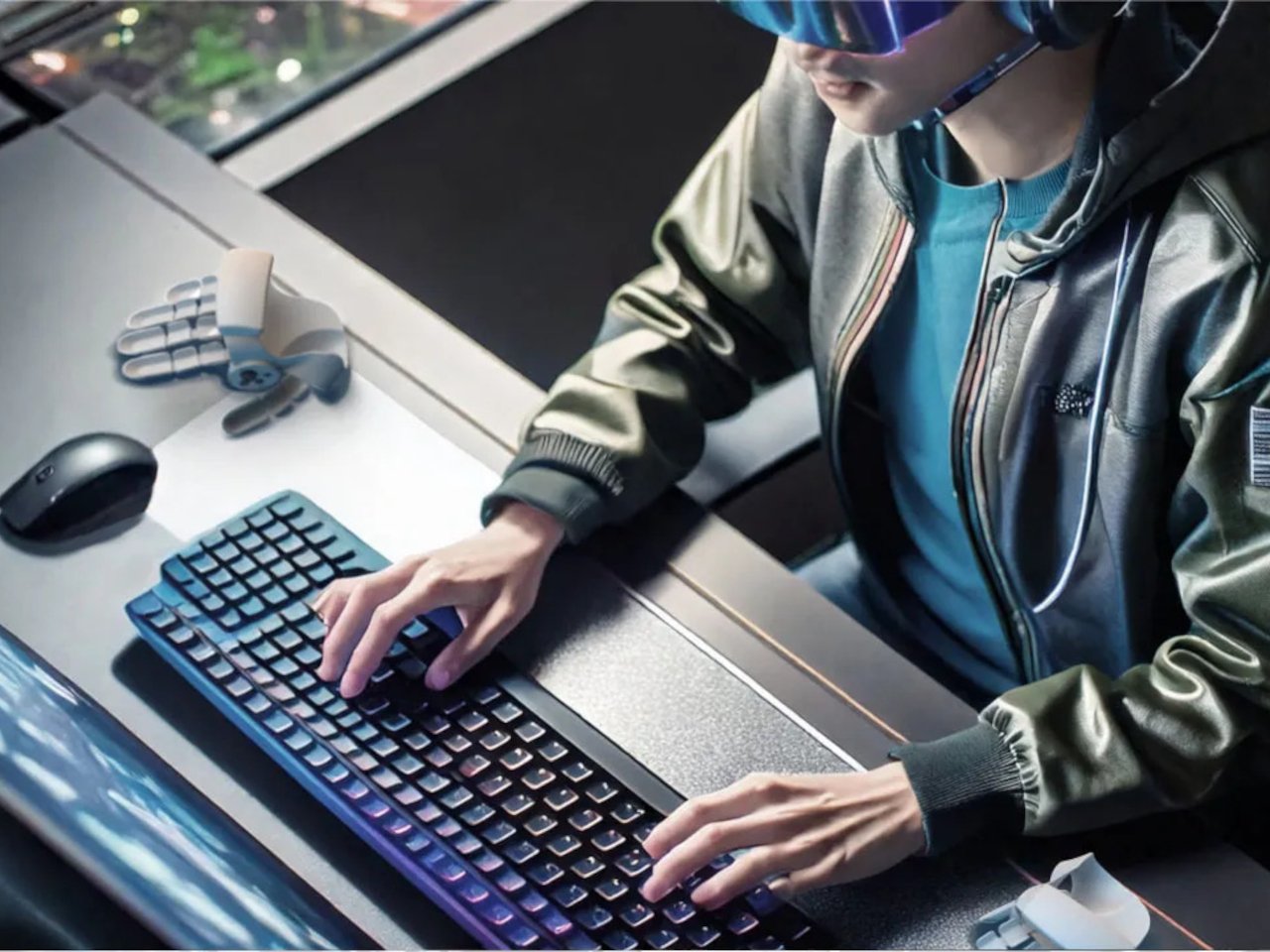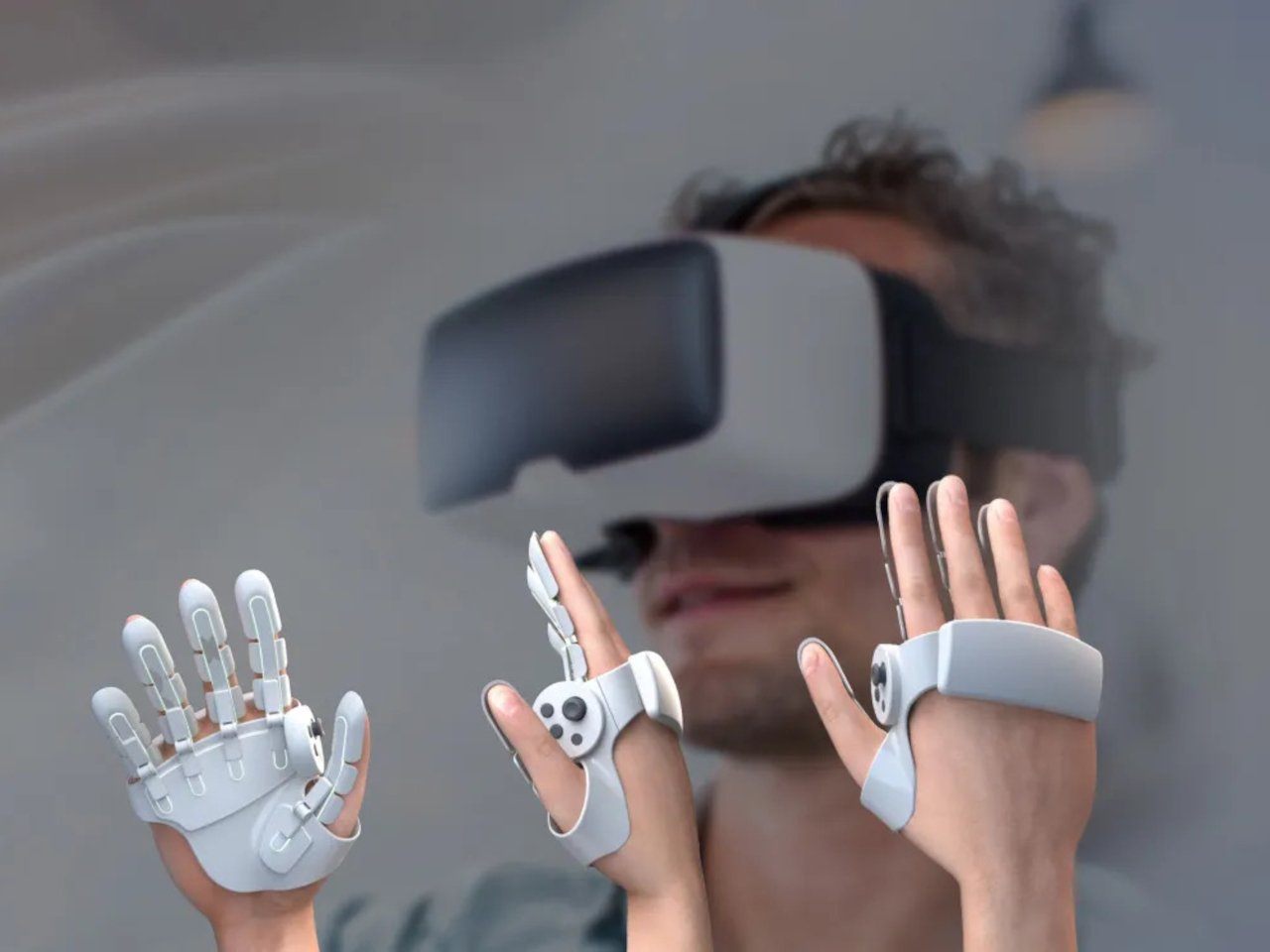
Virtual reality has come incredibly far in recent years, but there’s still something missing from most VR experiences: realistic touch. You can see stunning virtual worlds and hear immersive audio, but when you reach out to touch a virtual object, your hand passes right through it without any tactile feedback whatsoever.
Sharp’s new VR Haptic Controller prototype tackles this problem with a clever hybrid design that combines the best aspects of haptic gloves and traditional VR controllers. Rather than forcing users to choose between realistic touch or practical input methods, this device delivers both in a single, surprisingly elegant package.
Designer: Sharp
Hybrid Design: Glove Meets Controller
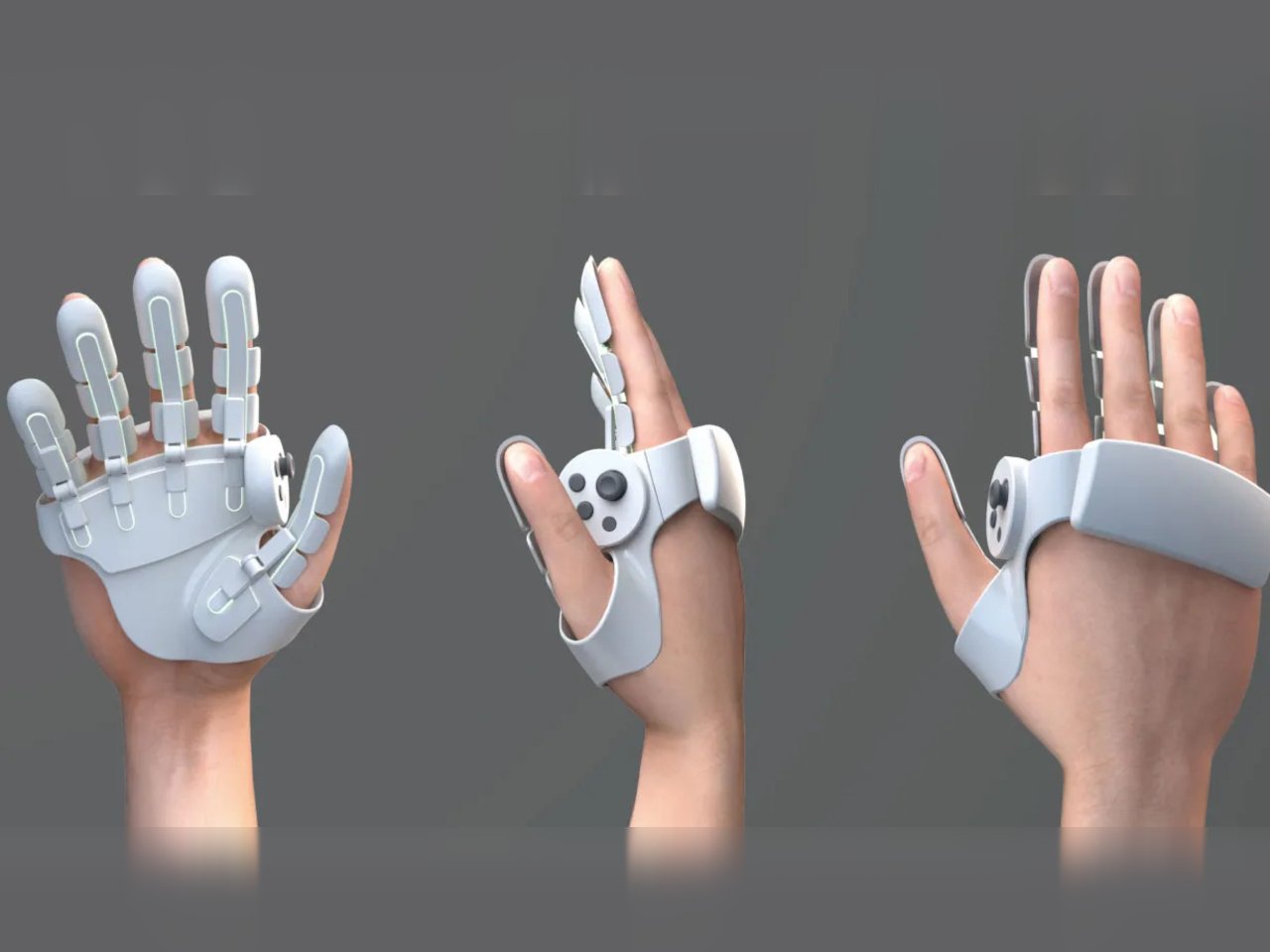
The Sharp controller uses what the company calls a “half-glove” form factor, where your fingers slip into individual sleeves while your thumb remains free to operate familiar buttons and thumbstick controls. This setup feels much more natural than full haptic gloves, which often leave users struggling with basic navigation and menu interactions.
The design addresses one of the biggest complaints about existing haptic gloves: they sacrifice usability for immersion. By keeping traditional controller elements accessible, Sharp ensures that users can actually play existing VR games without having to relearn basic interactions. The controller surface attaches to the side of your index finger, positioning controls exactly where your thumb expects to find them.
Multi-Segmented Tactile Elements
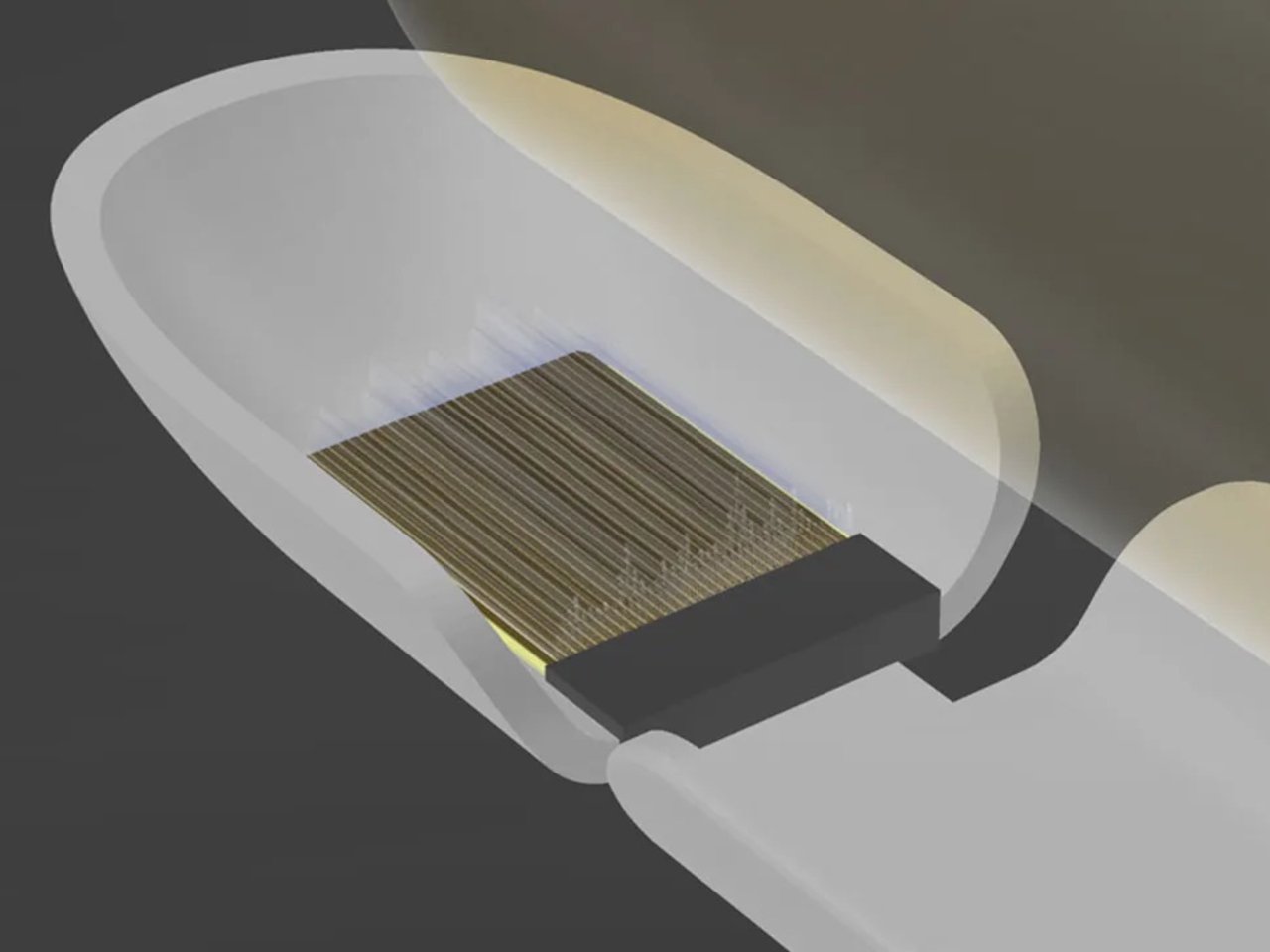
Each fingertip features what Sharp calls “multi-segmented tactile elements,” which sounds fancy but basically means tiny vibration motors that can simulate different textures and sensations. These actuators can recreate the feeling of touching rough bark, smooth glass, or even the sensation of your finger sliding across different virtual materials.
The technology works by dividing the vibration patterns across multiple segments on each finger, creating surprisingly realistic tactile feedback. During demonstrations, users report being able to distinguish between various virtual textures, from coarse sandpaper to polished metal surfaces. The system can even simulate temperature differences and material density, making virtual objects feel genuinely different from one another.
Why It Matters: User Experience and Future Potential
This kind of realistic touch feedback could transform VR applications beyond gaming. Imagine medical students practicing surgical procedures with actual tactile feedback, or architects being able to feel the texture of building materials in virtual walkthroughs. The potential applications extend far beyond entertainment into professional training and design work.
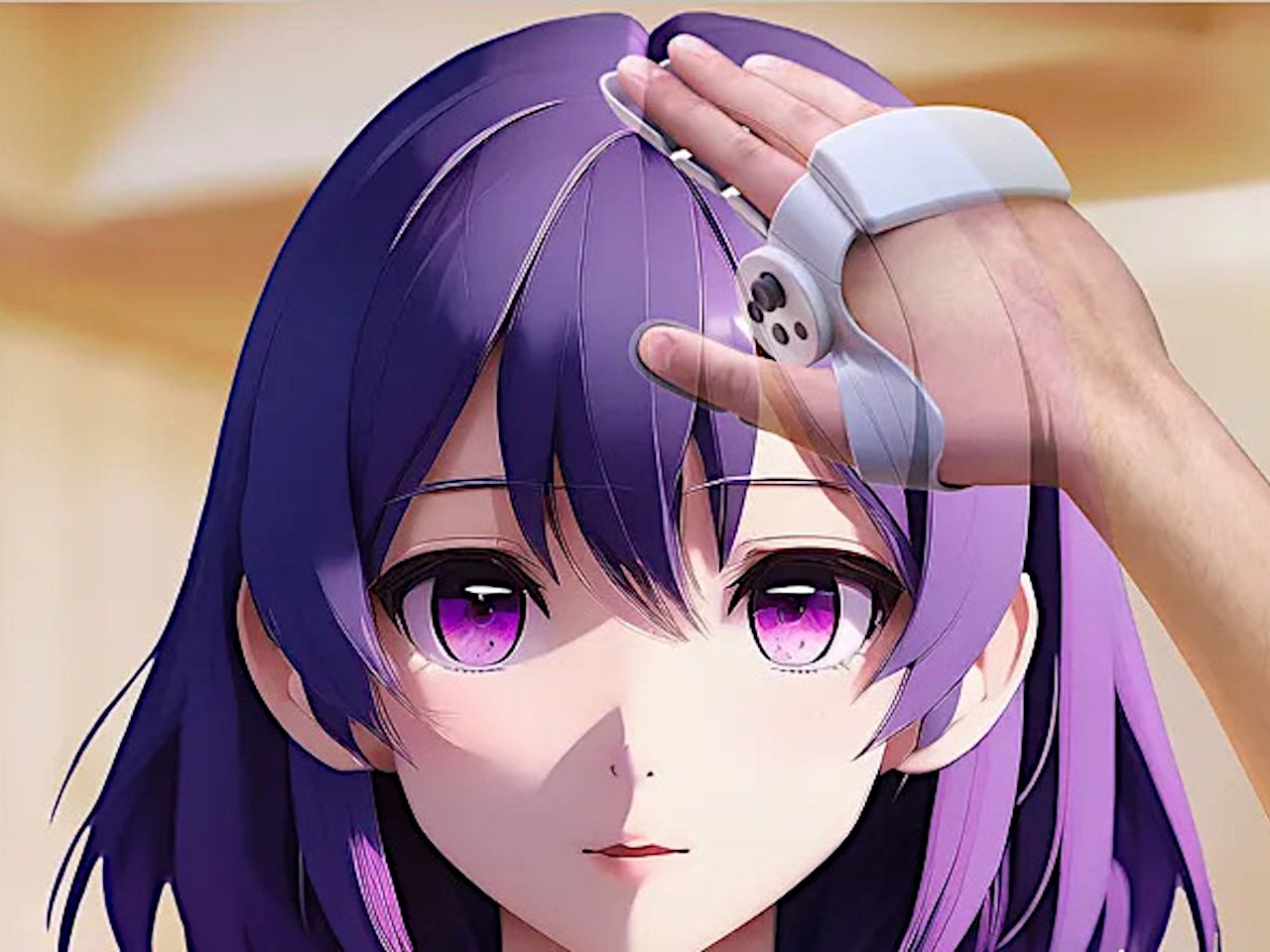
Compared to other haptic gloves on the market, Sharp’s controller offers significantly higher tactile resolution while maintaining the practical advantages of traditional VR controllers. Companies like bHaptics make decent haptic accessories, but most sacrifice either comfort or functionality. Sharp’s hybrid approach seems to solve both problems simultaneously.
Quick Features:
- Hybrid glove-controller design
- Multi-segmented tactile actuators
- Built-in buttons and thumbstick
- Texture simulation for fingertips
- Prototype status, not yet commercial
The Sharp VR Haptic Controller represents a genuinely exciting step forward for immersive technology. While it remains a prototype with no confirmed release date, the device demonstrates how thoughtful design can solve longstanding problems in VR interaction. If Sharp decides to commercialize this technology, it could finally deliver the realistic touch experiences that VR has been promising for years.
